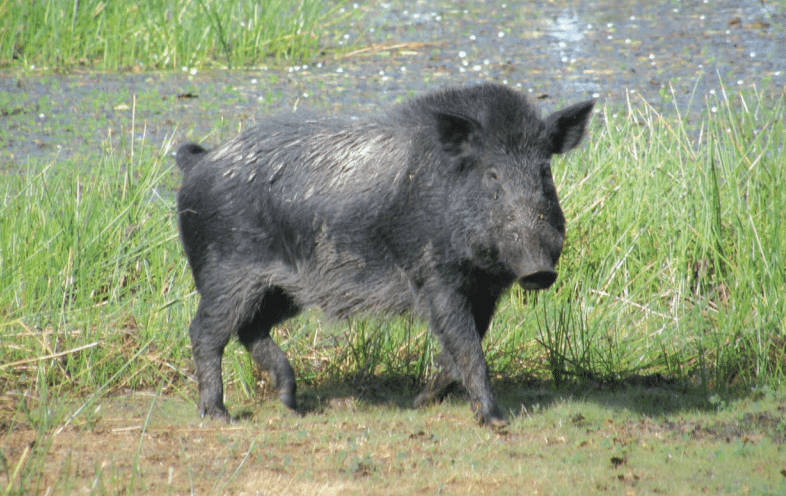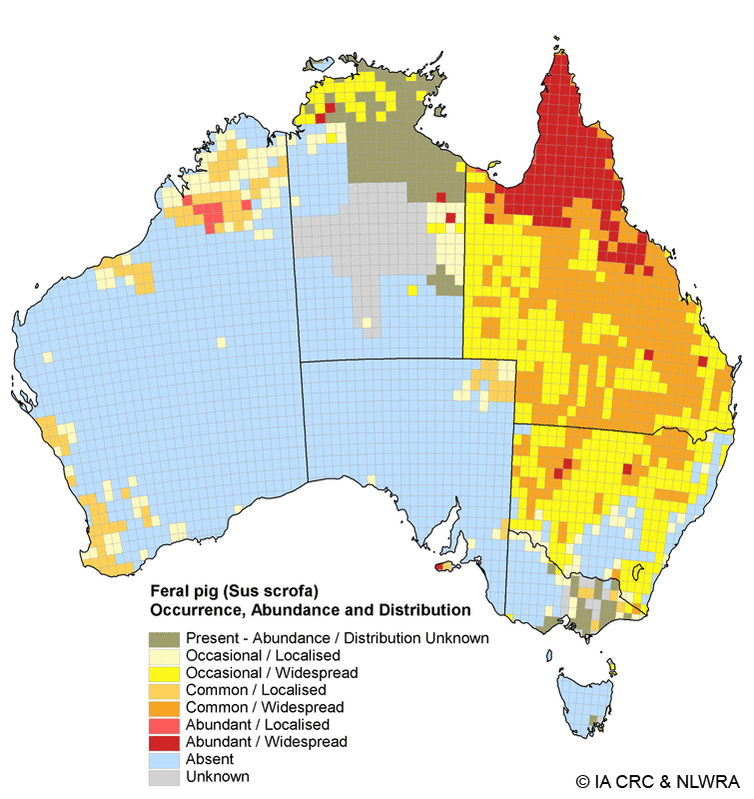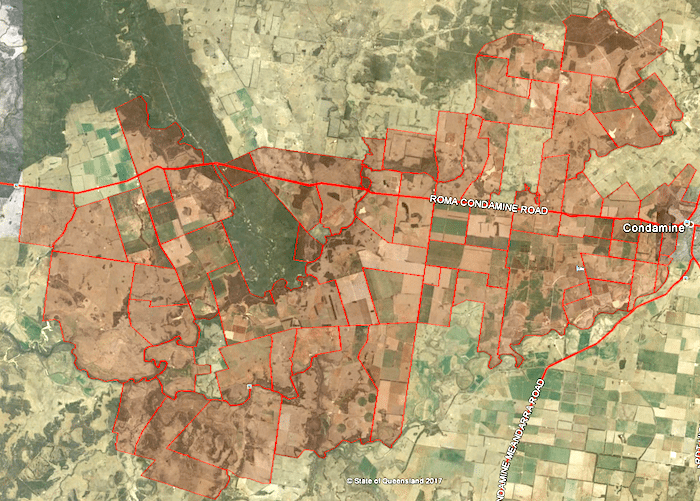
Feral pigs can carry many infectious diseases, many of which can spread to domestic pigs, other livestock and humans, including sparganosis, melioidosis, leptospirosis, Q fever and brucellosis. Image: Biosecurity Queensland.
LANDHOLDERS organising a large feral pig cull in western Queensland say concerns about disease and biosecurity risks have become as much a motivation for the campaign as the need to curb damage wild pigs cause to crops, pasture, livestock and fencing and water infrastructure.
Feral pigs are known to carry a number of zoonotic diseases, including Brucella suis, leptospirosis and Q fever.
In recent years studies have shown that swine brucellosis is widespread in feral pig populations in Queensland and has more recently been spread by wild pigs in New South Wales.

Feral pigs are found in every state and territory in Australia, but their highest concentration is in Queensland. Image: National Land and Water Resources Audit
The disease can infect dogs that have contact with feral pigs, for example through hunting or eating uncooked meat of wild pigs, but can also spread to humans through blood contact, and can cause miscarriages and infertility.
In Australia the Brucella suis infection is only known to occur in feral pigs, not domestic pigs.
At Condamine in western Queensland, the Condamine West Pest Management group, involving 54 landholders with 73 properties collectively organised a helicopter and a marksman to cull feral pigs in a 138,737-hectare area (345,000 acres) bordering the Condamine River in June.
A total of 938 pigs were culled in four days.
Information provided by the Queensland Department of Agriculture shows that in the right conditions a feral pig population can increase by 500 percent in a 12-15 month period.
Based on that data, the 938 pigs culled in the June shoot could have grown to 4690 in just one year’s time.
A meeting was held in Condamine this week to organise a follow-up shoot in coming weeks.
Landholder Rebecca Bidstrup, who helped to organise the collective campaign, said research has shown that while a one-off shoot can reduce populations by about 40pc, a second-shoot within three to six months can increase that number to over 70pc.
Evidence suggests that unless a feral pig population is reduced by 70 per cent, the population will quickly return to pre-control levels.
Aerial shooting is considered a far more effective and efficient way to reduce feral pig populations than ground shooting. Research by the Queensland Murray Darling Committee indicates that while pig shooters on the ground can reduce populations in the shorter term, it is often difficult to maintain enough pressure across enough country to effectively keep population numbers down in the longer term.
Feral pigs are prolific breeders with one sow being able to produce up to 20 piglets in 12 months.
The QMDC says results show control is most effective when a whole region is involved,. This could mean regional coordination of dates, pre bait, aerial shoot and trapping, followed by a population count to evaluate effectiveness.
A key motivating factor for the first shoot in June was to reduce pig numbers to curb damage to this winter’s chickpea crop.
However Mrs Bidstrup said recent media attention focusing on the prevalence of Brucellosis in feral pig populations was another factor motivating landholders to proactively cull feral pig populations.
“I think we can be in danger of becoming a bit complacent about these things,” she said.
The next shoot will cover the same area but is also expected to cover a larger footprint by coordinating with the Meandarra Pest Management Group, a group that has been operating for several years.
Mrs Bidstrup said the helicopter pilot and shooter contracted had worked together for a long time and were very cautious about avoiding disruptions to livestock.
“Pigs travel through property boundaries so the objective is to do this in a coordinated way, and to give these guys free range to track the pigs across boundaries.
“They are very good at what they do, they are very cautious about not going where they are not supposed to, and they have got really good results.”
Mrs Bidstrup said the cost of the campaign equated to about 4c per acre for each landholder, so it was very effective and affordable pest control work.
In Queensland’s Western Downs council region alone it is understood that as many as 10 coordinated groups, representing more than 400 individual landholders, have been undertaking similar control programs in recent years, highlighting the level of concern that now exists around feral pig populations.
In the past 12 months these 10 groups have destroyed 7701 pigs, helping to reduce hundreds of thousands of dollars worth of potential damage to cropping and grazing enterprises.
Under Queensland’s Biosecurity Act, feral pigs are classified as a restricted invasive animal. The Act requires everyone to take all reasonable and practical steps to minimise the risks associated with invasive plants and animals under their control.
More information on feral pig impacts and control strategies can be found at this Biosecurity Queensland link.


HAVE YOUR SAY